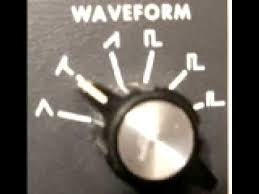There are some great emulations. I have Arturia’s Buchla Easel V software and… while I don’t own an actual Music Easel for comparison, it sounds like they do in recordings, so long as some of the extra features are avoided. Ditto for d16 LuSH-101 (or Roland’s own “Boutique” SH01A) vs. an SH-101. They might not be perfect, but they’re definitely close enough for most purposes.
But digital emulations still have their limitations, things designers just don’t model or can’t reasonably model. Issues of audio rate modulation, feedback, and some of the bizarre unintended quirks (not just temperature drift!) that analog circuits have. Or even digital circuits, which exist in an analog world 
Take BBD emulations for instance – they all go for the pedal sound, relatively clean but dark, and some are pretty okay. But I haven’t found one yet that sounds like a Doepfer BBD, which intentionally has no filter and can be clocked externally and/or way slower than its chip was meant for. I also haven’t heard an all-digital model of a PT2399 delay (itself sort of a hybrid digital-ish imitation of a BBD chip) that does the characteristic noisy breakup thing it does when it’s slowed down too much. Could those be modeled? In theory…
I had a Pittsburgh Lifeforms Double Helix for a while – an analog complex oscillator that’s got all this weird crosstalk and self-modifying behavior that isn’t really designed in, so much as a consequence of the design choices. Totally full of character and I kind of wish I’d kept it, but it draws way too much on the -12V rail for my case  Nobody models stuff like this though.
Nobody models stuff like this though.
Plogue has a couple of very nice FM synth VSTs where they exhaustively probed and tested and emulated the Yamaha OPN2 (Chipsynth MD) and OPLL (Chipsynth PortaFM). I love the effort they put in and those things sound like you’ve got a crappy old Yamaha keyboard or a Sega MegaDrive sitting there playing the music…
But I recently picked up an Akemie’s Castle – a Eurorack module built around NOS Yamaha OPL3 chips (as used in the Sound Blaster Pro 2) and the real thing is just miles beyond, in terms of weird crusty artifacts and gorgeous overall sound. It’s digital in an analog shell, with some of the weirdness a result of the cost limitations at the time and some of it the result of analog interactions.
I’m not anti-digital at all – very happy hybrid here. I always run my Yamaha Reface CS (digital) through an Elektron Analog Drive, before going into my DAW. All my current Eurorack oscillators are digital, and I integrate my modular with Bitwig Studio. I happily use tube and tape emulations in software rather than messing with the expense and hassle of the real things.


 Nobody models stuff like this though.
Nobody models stuff like this though.
